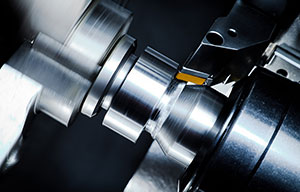Features of Silicone Rubber Prototyping
1. Silicone rubber parts are widely used in many products, such as silicone sealing ring, silicone ring, silicone gasket, silicone membrane, silicone plug, silicone O ring, and so on. The creation of silicone rubber prototype is tailored to meet various customer specifications, encompassing material type, hardness, color, electrical conductivity, and more.
2. As a China rapid prototyping supplier and a reliable rubber prototype manufacturer, we offer customized rapid rubber prototyping services, including silicone compression molding and LSR injection molding, from mold design, mold manufacturing, silicone rubber parts prototyping and production, packaging and shipping, etc.
Silicone Rubber Prototyping Details and Options
Process of silicone compression molding
Firstly, Making compression mold
The mold making starts with mold design as per the part 3D, then programming, cnc machining the rough shape, and then EDM spark and engraving machining, finally surface finish such as polish, texture, etc as per customer’s requirement.
Secondly, according to the customer's requirement, feed the raw silicone through a the silicone mixing roller to mix in required colouring.
The commonly used materials for processing are: silica gel, nitrile rubber, ethylene propylene rubber, fluorine rubber, etc. The color matching process should be done carefully, which needs constant pulling, cutting, flipping, etc. to make the color fusion more uniform. After the finished product comes out, the color remains the same, and the pass rate is high!
Cutting the material
After the silicone rubber compound is mixed, it is placed for 24 hours , and then according to the requirements of placing the rubber strips in the production and forming operation instructions, the rubber cutting and preparation processing are carried out, and the cut rubber materials are weighed and placed on the shelf for use.
Compression molding
After cutting the mixed silicone rubber into strips, and it needs to be weighed in the molding department to avoid loss and waste, and then put into the mold for compression molding at a high temperature of 200 °C.
The molded silicone rubber parts usually have some flash, etc, it needs to use scissors and pliers to clean the flash.
IPQC inspection and packing
The quality staff inspect the molded rubber parts to check if meets requirement, such as appearance, size, function, etc. After IPQC, the products are packed and delivered to customers.
Advantages of silicone compression molding
Silicone compression molded parts are tensile, tear-resistant, shock-resistant, stable performance.
It resist low and high temperature (-30 degree C to +260 degree C)
It can be Waterproof, fireproof, dustproof;
The silicone compression molded parts are high precision, regular and beautiful shape.
It allows adjusting any color matching the in
The Process of LSR Molding
The molding machine for LSR---Liquid Injection molding machine, Short name LIM machine
LIM uses a quantitative device (feeder) to control the ratio of two materials (component A and component B) at a ratio of 1:1. If the product has color requirements, add color paste (or additives, etc.), and then pass the mixer to fully After the mixing is pumped into the barrel of the injection molding machine, the screw accurately injects the liquid silicone into the mold cavity. At a certain mold temperature, the liquid silica gel undergoes a curing reaction.
Following are the major steps used in the LSR molding process:
Uncured liquid silicone containing two containers, Compound A and Compound B, connected to the pump system. Drum contains the base forming material and Drum B contains the catalyst. A metering device automatically releases the two substances and the pigment additive in a fixed 1:1 ratio.
LIM machine can program and customize the automatic molding machine and make injection settings to provide the correct injection volume for each job. Align the platen and piston to close the mold, and set the temperature, pressure, firing rate and cycle time according to customer requirements.
After the shaping is completed, the molding machine will heat the mold to a suitable temperature and apply a suitable clamping force. The mold is closed together with the machine's syringes, pumps and supplies. The injection mechanism then pushes the material into the mold and cavity.
Apply heat and pressure to the liquid silicone rubber to cure the material. After the cycle is complete, the mold is opened and the part and burrs are removed automatically or by an operator. Then close the mold and repeat the process.
After the product is released from the mold, it will perform post-molding processes such as deburring, secondary curing, inspection, and packaging.
Advantages of LSR Injection molding
Non-toxic, can be used for medical and food use.
Non-toxic to human body, odorless and tasteless. LSR is more used in little baby’s products
Environment friendly, it is degradable;
No toxic and harmful substances are produced during combustion (the combustion products are mainly SiO2);
Tear strength, resilience, water resistance and waterproofing;
Weather resistance: Due to the high Si-O bond energy, higher energy than ultraviolet radiation, it is not easy to be decomposed by ultraviolet light and ozone, so it has good ultraviolet resistance, ozone resistance and aging resistance;
Temperature resistance: good heat resistance and cold resistance, long-term use in the temperature range of -50℃~200℃, it still has good elasticity, no melting and embrittlement (special products can reach -110℃);
Excellent Electrical insulation performance: its dielectric loss, withstand voltage, arc resistance, corona resistance, resistivity, etc. are among the best in insulating materials, and electrical properties are rarely affected by temperature and frequency;
Biological compatibility: Polysiloxanes are among the most inactive compounds known. They are very resistant to biological aging, have no rejection reaction with animals, and have good anticoagulant properties.
Fast turn-around: LSR has low viscosity, fast vulcanization, shear thinning and high thermal expansion coefficient before curing, and can be produced by injection molding, rapid and repeatable mass production.


 EN
EN
 ja
ja  ko
ko  fr
fr  de
de  es
es  it
it  pt
pt  ar
ar  tr
tr  iw
iw 








